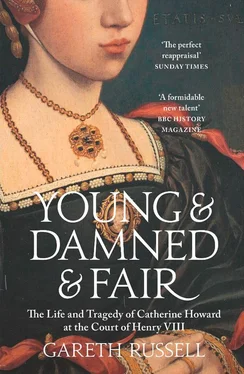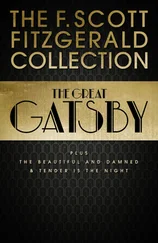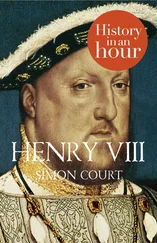At the Tower, Lord Hungerford’s wish that the headsman should acquit his task quickly was not to be fulfilled. Edward Hall described Cromwell’s executioner as ‘ragged [and] butcherly’, who ‘very ungoodly performed his office’.29 No more details are provided about what went wrong with the beheading, but rumour began with the claim it had taken three strokes to cut through the minister’s thick neck. By the end of the month, entertainment had triumphed over plausibility with stories that it had taken two headsmen half an hour to kill him and allegations that Cromwell’s enemies, who had been seen banqueting and celebrating throughout the week preceding his death, had taken the executioner out to feast him the night before, to get him drunk and hope that with a hangover he would give Cromwell as painful a death as possible. All we know for certain is Edward Hall’s remark that the executioner had carried out the task in an ‘ungoodly’ manner and that afterwards Cromwell’s head was taken with Lord Hungerford’s to gaze and rot from the top of the pikes at London Bridge.
From the little chapel at Oatlands and the imposing towers of London, bells tolled out to mark a wedding and a death. Bells still tolled too every second day of November, the Feast of All Souls, the Catholic Day of the Dead, when Christ’s flock on earth were compelled to remember their brothers and sisters in the faith who had gone before them. They would toll again on the fifteenth day of August, the Feast of the Assumption, to mark the entry of the Virgin Mary into Heaven, there to be crowned its queen, as foretold, so the Church taught, in the visions of Saint John in the Book of Revelation.30 Celestial queens had not yet been abolished, despite the best efforts of the Protestant evangelicals and the man who had fallen on Catherine’s wedding day. But in a world where statues of Our Lady could be taken from Norfolk and torched in front of large London crowds with Cromwell watching on, it did not seem as if the Virgin Mary was any more secure on her throne than Katherine of Aragon or Anne Boleyn had been on theirs. It was an age of uncertainty and terrifying possibilities, and Catherine Howard was now its queen.
Chapter 2
Our Fathers in Their Generation

Let us now praise men of renown, and our fathers in their generation.
– Ecclesiasticus 44:1
The first recorded mention of Catherine Howard, born as she was in the decade before the government made mandatory parish-level records of each baptism, comes from a will.1 Her maternal grandmother, Isabel Worsley, left a bequest, ‘To Charles Howard Henry George Margaret Catherine Howard XXs [twenty shillings] each.’2 It is a very quiet entrance for a future queen of England – Catherine is even upstaged in the concluding half of the sentence by her younger sister Mary, who, as Isabel’s goddaughter, received a more substantial bestowal of £10.3 Yet it is from the Worsleys and their kin that much of the relevant evidence about Catherine’s early years originates.
Beyond its object as a matter of general historical interest in showcasing how prosperous members of county society chose to dispose of their earthly possessions on the eve of the Reformation – rather touching is Isabel’s stipulation that every housewife in Stockwell, part of Isabel’s home parish of Lambeth, should receive a gift of linen worth twelve pence or, failing that, a monetary gift of the same amount; likewise her decision to set aside £6 to repair a local highway – the will, which went to probate on 26 May 1527, proves that Catherine had been born, with time to spare for a younger sister, by the spring of that year.4 As with all four of Henry VIII’s English-born wives, and many of their contemporaries, we are left to guess when they arrived in the world using fragmentary evidence provided by throwaway or contested remarks from those who knew them or saw them, personal letters, family wills, and comments in contemporary memoirs or chronicles. The analysis of these documents has thus produced a broad spectrum of supposition. In Catherine’s case, suggestions for her birthdate have run the gamut from 1518 to 1527. The promotion of the former date seems motivated mainly by a desire to rehabilitate a particularly dubious portrait, which will be discussed subsequently, while support for the later years partly derives from the account of a Spanish merchant living in London late in Henry VIII’s reign, who described Catherine as ‘a mere child’ at the time of her marriage in 1540.
While both Catherine and her younger sister are mentioned in Isabel’s final testament of 1527, they are absent from the will of her husband, Sir John Leigh, which is usually dated to 1524. Their three brothers, Charles, Henry, and George, are mentioned in both.5 The year 1525, which leaves time for a younger sister to be born and named as Isabel’s goddaughter by 1527, has thus gained understandable acceptance as Catherine’s most likely date of birth in several recent accounts of her career.6 Critics of this conclusion point out that the two sisters’ absence from Sir John’s will proves nothing, because in a patriarchal society like early modern England, it would be unusual for very young female members of a family to be mentioned in the wills of male relatives.
In fact, both conclusions are arrived at by misreading John Leigh’s testament. While codicils pertaining to the distribution of some parcels of land were added in August 1524, the will itself was actually written nearly a year earlier, and dated 16 June 1523. If the Leighs’ documents are to be used as bookends for Catherine’s arrival, they establish a date between the summer of 1523 and the spring of 1527. Furthermore, far from focusing solely on the male members of his line, John Leigh made numerous gifts to young female members of his extended family, including all Catherine’s elder half sisters. They, admittedly, were Leighs, but it seems unlikely that John Leigh would also include all Catherine’s Howard brothers and neglect to mention her at all, unless she was extremely young, a tentative conclusion that leaves us free to accept the one specific contemporary comment on her age, made by the French diplomat Charles de Marillac, who met Catherine on several occasions in 1540 and 1541, and believed that she had been eighteen years old in 1539–40.7 Catherine and de Marillac attended several hunting trips together in the summers of 1540 and 1541, and this seemingly decisive statement from someone well placed to know dates her birth to 1520 or 1521. De Marillac’s credibility is allegedly undercut by the claim that he believed Anne of Cleves to be thirty in 1540, when she was in fact twenty-four, but an examination of the relevant letter shows that on the subject of Anne’s age, de Marillac wrote, ‘Her age one would guess at about thirty.’8 An unchivalrous comment, but not necessarily an inaccurate one.9 It may very well be that, with Catherine, de Marillac was again basing his estimate on how old she looked.
De Marillac’s estimate of Catherine’s age gains more credibility upon examination of the ages of Catherine’s peers when she joined the court as a maid of honour in 1539. None of the girls who served alongside her was born before 1521, the date of birth for Anne Bassett, the most senior of the group, who had been at court since 1537. One of the girls who joined at the same time as Catherine, her second cousin Katherine Carey, was born either in 1523 or 1524, and while we do not have precise dates for the others, all those who joined within twelve months of Catherine were definitely born at some point in the early-to-mid-1520s.10 The implication that Catherine, coming from a similar background into the same position, was five or six years older than the rest – or even three years older than the already established Anne Bassett – stretches credulity. When combined with the evidence of John and Isabel Leigh’s wills, Charles de Marillac’s indirect guess of about 1521 rules out a date as late as 1525, and the biographical details of the other half-dozen or so maids of honour similarly discredit one as early as 1518. None of this is definitive, but when set alongside other circumstantial evidence from Catherine’s life, it suggests 1522 or 1523 as the most probable years of her birth.11
Читать дальше












![John Bruce - The Lettsomian Lectures on Diseases and Disorders of the Heart and Arteries in Middle and Advanced Life [1900-1901]](/books/749387/john-bruce-the-lettsomian-lectures-on-diseases-and-disorders-of-the-heart-and-arteries-in-middle-and-advanced-life-1900-1901-thumb.webp)
